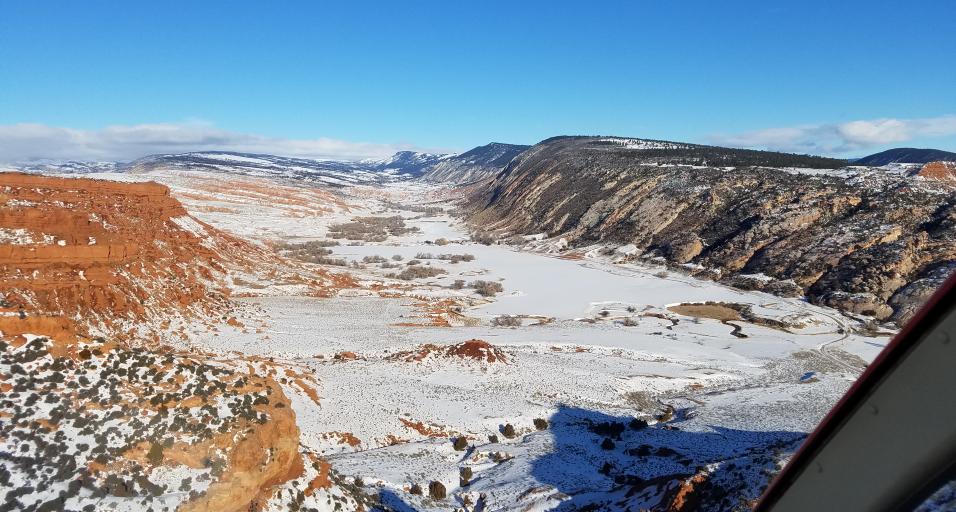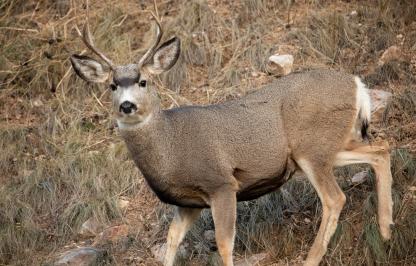Game and Fish wildlife managers completed a sightability survey of mule deer in February in the Upper Powder River Herd Unit between Buffalo and Kaycee. This herd unit includes Deer Hunt Areas 30, 32, 33, 163 and 169. The survey involved several days of low-level flying in two helicopters, which may have been visible to residents in the area.
Sightability surveys are an intensive monitoring effort designed to provide a population estimate. The technique was developed in Idaho and has been used in Wyoming the past 10 years.
“Our annual classification and harvest data are useful for looking at population trends over time,” explained Buffalo Wildlife Biologist Cheyenne Stewart. “But the population estimate from the sightability survey is designed to get a more accurate picture of the total number of deer in the herd at this point in time. We will now use the sightability survey results to improve our annual population estimates.”
The sightability survey took place on six days between Feb. 2-13. Each of the 47 survey units within the herd unit was surveyed with one observer seated next to the pilot and one observer in the backseat on the opposite side. The survey area was flown over several hours and all deer observed were counted.
Observers also recorded each deer’s behavior, the snow cover and the habitat type. Those details help wildlife managers estimate how many deer were missed in the count and give a more accurate final population estimate. For example, if five deer were observed bedded in a conifer stand, this method assumes there were more deer than observed. Alternatively, if 20 deer were observed running in the open with a fresh blanket of snow on the ground, this method assumes that all of the deer in that scenario were recorded.
Based on data from the survey, the estimated population for the Upper Powder River Mule Deer Herd is 8,500, significantly lower than the herd objective of 18,000. The herd has been below this objective since the early 2000s and an intensive research project was initiated in 2018 to assess survival rates, nutritional status, seasonal movement patterns, habitat use patterns and fawn recruitment into the population.
“We are working really hard to understand the population dynamics of this herd, with on-going research,” said Stewart. “Our buck harvest is not impacting our ability to increase the population. Our doe harvest is extremely limited and is not having a population level impact. We have also established liberal hunting seasons for black bears, mountain lions, elk and white-tailed deer. Our data show that we have good age distribution of harvested bucks which aligns to our strategy for maintaining high buck-to-doe ratios.”
Stewart will continue to provide periodic updates on the study. A video of the most recent deer captures as part of Stewart’s research can be seen here.
Upper Powder River Mule Deer Herd Sightability Survey
3076727418




